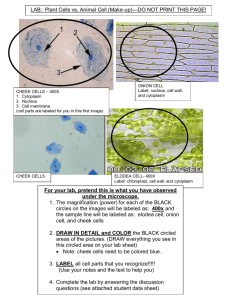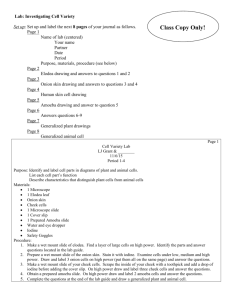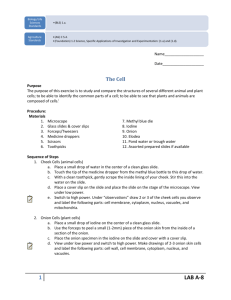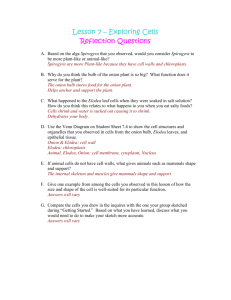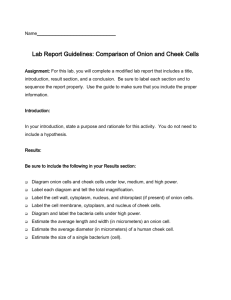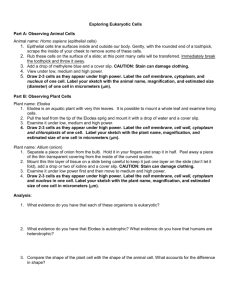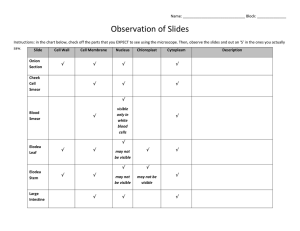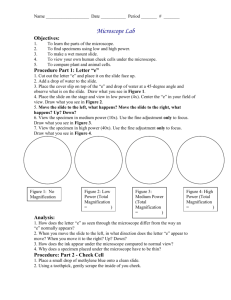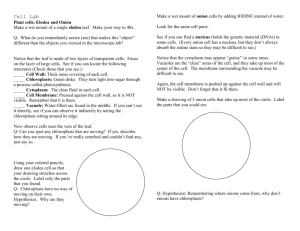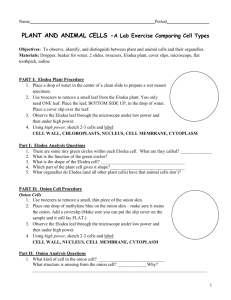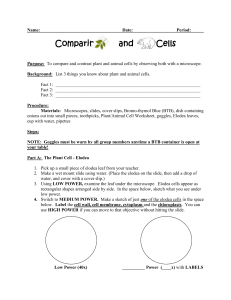File
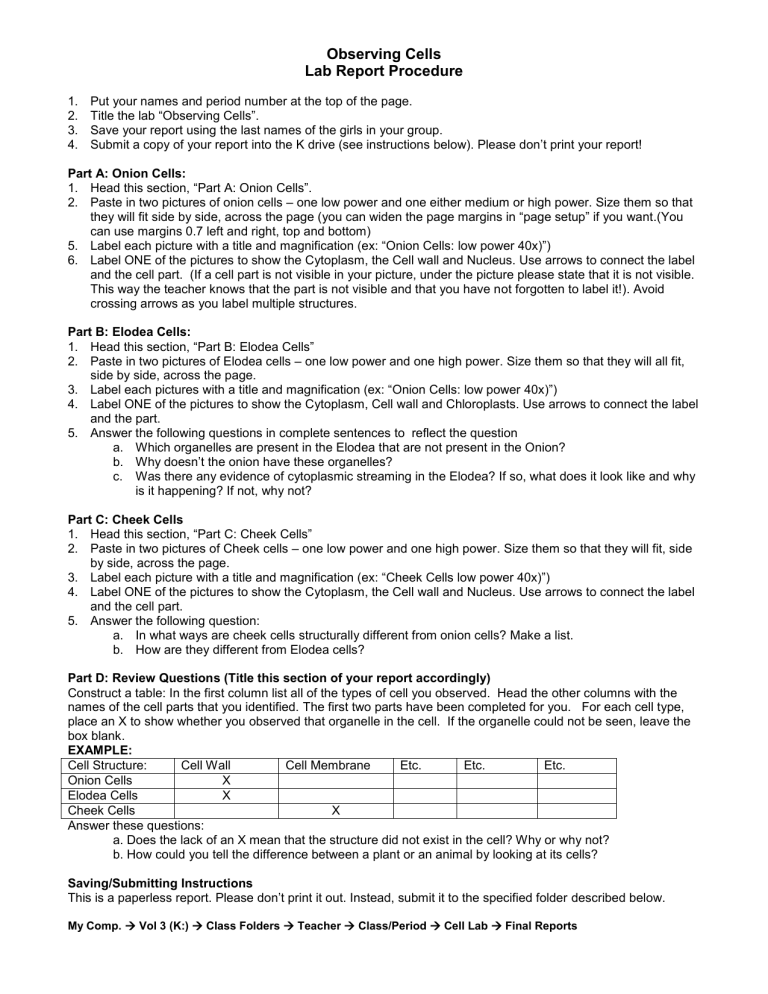
Observing Cells
Lab Report Procedure
1. Put your names and period number at the top of the page.
2. Title the lab “Observing Cells”.
3. Save your report using the last names of the girls in your group.
4. Submit a copy of your report into the K drive (see instructions below). Please don’t print your report!
Part A: Onion Cells:
1. Head this section, “Part A: Onion Cells”.
2. Paste in two pictures of onion cells – one low power and one either medium or high power. Size them so that they will fit side by side, across the page (you can widen the page margins in “page setup” if you want.(You can use margins 0.7 left and right, top and bottom)
5. Label each picture with a title and magnification (ex: “Onion Cells: low power 40x)”)
6. Label ONE of the pictures to show the Cytoplasm, the Cell wall and Nucleus. Use arrows to connect the label and the cell part. (If a cell part is not visible in your picture, under the picture please state that it is not visible.
This way the teacher knows that the part is not visible and that you have not forgotten to label it!). Avoid crossing arrows as you label multiple structures.
Part B: Elodea Cells:
1. Head this section, “Part B: Elodea Cells”
2. Paste in two pictures of Elodea cells – one low power and one high power. Size them so that they will all fit, side by side, across the page.
3. Label each pictures with a title and magnification (ex: “Onion Cells: low power 40x)”)
4. Label ONE of the pictures to show the Cytoplasm, Cell wall and Chloroplasts. Use arrows to connect the label and the part.
5. Answer the following questions in complete sentences to reflect the question a. Which organelles are present in the Elodea that are not present in the Onion? b. Why doesn’t the onion have these organelles? c. Was there any evidence of cytoplasmic streaming in the Elodea? If so, what does it look like and why is it happening? If not, why not?
Part C: Cheek Cells
1. Head this section, “Part C: Cheek Cells”
2. Paste in two pictures of Cheek cells – one low power and one high power. Size them so that they will fit, side by side, across the page.
3. Label each picture with a title and magnification (ex: “Cheek Cells low power 40x)”)
4. Label ONE of the pictures to show the Cytoplasm, the Cell wall and Nucleus. Use arrows to connect the label and the cell part.
5. Answer the following question: a. In what ways are cheek cells structurally different from onion cells? Make a list. b. How are they different from Elodea cells?
Part D: Review Questions (Title this section of your report accordingly)
Construct a table: In the first column list all of the types of cell you observed. Head the other columns with the names of the cell parts that you identified. The first two parts have been completed for you. For each cell type, place an X to show whether you observed that organelle in the cell. If the organelle could not be seen, leave the box blank.
EXAMPLE:
Cell Structure:
Onion Cells
Cell Wall
X
Cell Membrane Etc. Etc. Etc.
Elodea Cells
Cheek Cells
X
X
Answer these questions: a. Does the lack of an X mean that the structure did not exist in the cell? Why or why not? b. How could you tell the difference between a plant or an animal by looking at its cells?
Saving/Submitting Instructions
This is a paperless report. Please don’t print it out. Instead, submit it to the specified folder described below.
My Comp. Vol 3 (K:) Class Folders Teacher Class/Period Cell Lab Final Reports
